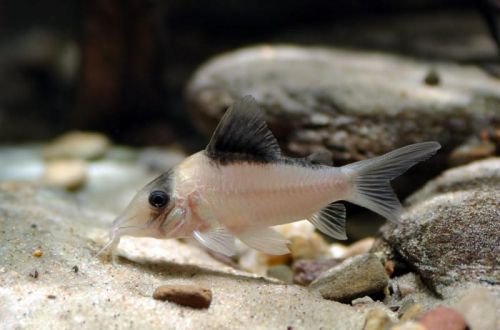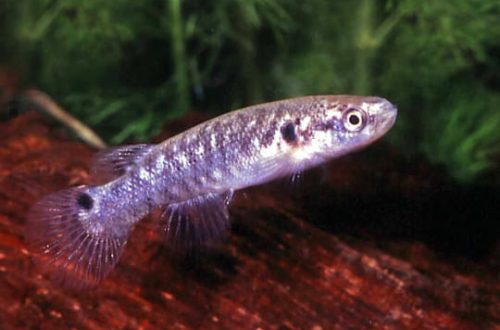
Corridoras impersonator
Corydoras imitator or catfish Cory-imitator, scientific name Corydoras imitator, belongs to the family Callichthyidae (Shell or callicht catfish). The word “imitator” in the name of the species indicates its similarity with Adolf’s Corydoras, as if this fish copies it in appearance.

It comes from South America from the upper basin of the Rio Negro River from the northern territory of the Brazilian state of Amazonas and the southern regions of Venezuela. Inhabits untouched sections of rivers flowing through tropical rainforest. A typical biotope is a shallow reservoir with very dark water saturated with tannins formed as a result of the decomposition of plant organic matter (fallen leaves, branches, etc.), which in large quantities covers the bottom of rivers and streams.
Contents
Description
As noted above, the catfish is similar to Corydoras adolf and some other closely related species such as Corydoras Burgess, Corydoras Sands, Corydoras duplicareus. All of them are almost identical, with only slight differences. Adult individuals reach a length of 5–6 cm. The color is silvery with a characteristic pattern of black strokes on the back and head. A distinctive feature is an elongated muzzle and a black dorsal fin. In some cases, dark pigmentation may not cover the entire area of the fin.
Brief information:
- The volume of the aquarium – from 80 liters.
- Temperature – 20-26°C
- Value pH — 4.0–7.0
- Water hardness – very soft (1-5 dGH)
- Substrate type – sandy
- Lighting – subdued or moderate
- Brackish water – no
- Water movement – light or moderate
- The size of the fish is 5–6 cm.
- Nutrition – any drowning
- Temperament – peaceful
- Keeping in a small group of 4-6 individuals
Maintenance and care
Like other Cory catfish, the Corydoras Mimic is relatively easy to maintain. He needs to provide very soft acidic water and a clean substrate of sand or fine gravel. The main attention should be paid to the process of water treatment and maintenance of hydrochemical values in the acceptable range of pH and dGH, as well as regular maintenance of the aquarium. The latter includes the prevention and cleaning of equipment, the weekly replacement of part of the water with fresh water, the removal of organic waste (food leftovers, excrement, dead plant fragments, etc.).
The optimal size of the aquarium for a small group of fish starts from 80 liters. In the design, in addition to the ground, it is recommended to use decorative elements that can act as shelters. These are natural driftwood, thickets of living plants, and other artificial decorative items. Experienced aquarists add the leaves of certain trees, such as Indian almond, oak, maple, birch, etc. As they decompose, they release tannins that give the water a chemical composition similar to that in which fish live in the wild.
Food. An omnivorous species, it will accept most popular dry, frozen and live foods. Due to the fact that the catfish spend a significant part of the time at the bottom, the food should be sinking.
behavior and compatibility. Peaceful calm fish, gets along well with other non-aggressive species of comparable size. Prefers to be in a community of relatives, so groups of 4-6 individuals are considered minimal.





